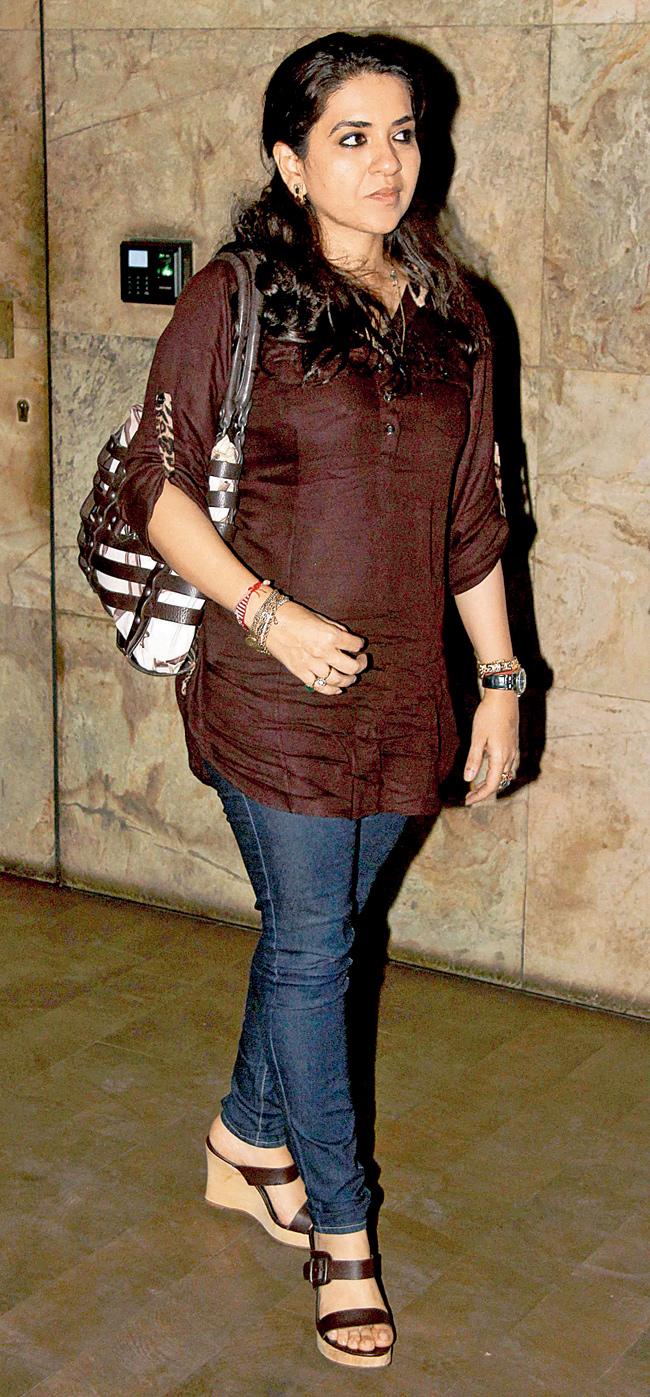In the second of her seven-part exclusive series, BJP leader Shaina NC on a very real problem facing Mumbai

Living in a slum at Bandra (west) close to the station, Vijaya wakes up every morning to deal with anxiety because she, along with her daughter, has to trek into the open with water cans to answer nature’s call. They could use the community toilet close to their home except that it is in terrible shape and it is simply easier to head into the open, despite the mental and emotional trauma.
ADVERTISEMENT

Shaina NC
Open defecation poses a serious threat to the health of children in India and is the main reason why India reports the highest diarrhoea deaths among children under five. Additionally, in women it is linked to other health problems like urinary tract infections, kidney and bladder malfunctions due to prolonged retention periods. According to the latest report published by UNICEF, open defecation puts at risk the dignity of women in India and they are constrained to relieve themselves only under the cover of dark for reasons of privacy.
This horrific reality is faced by over 20 percent of the residents in Mumbai, which is alarming because according to the 2011 census over 9 million people lived in the slums of Mumbai. Every year, diarrhoea kills 188,000 children under five in India. Most of these deaths are a result of practices such as open defecation. It is further concerning that women have to deal with continuous health problems because they are not able to relive themselves without putting their dignity and privacy at risk. As a woman myself, these figures are not only horrifying but also shameful and enraging.
According to a six-month intensive study conducted by Payal Tiwari of Observer Research Foundation (ORF) on toilets in Mumbai’s slums, defecating in the open is done more out of compulsion than choice.
“If we had proper toilets in our home or close, why would I allow my daughter to risk her life and feel ashamed daily to go to the toilet?” questions Vijaya. The alarming fact, endorsed by a recent study conducted by the BMC, is that the toilets are in a deplorable state. The BMC study revealed that that 58 per cent of community toilets in slums have no electricity, 78 per cent have no water or proper sewerage connections. Countless such toilets, many constructed by MHADA or the BMC, do not have doors, latches and lack proper ventilation.
My own interactions with slum residents lead me to discover more reasons why slum residents prefer to defecate in the open. It took a tremendous amount of grit for me to enter some of the toilets in the slums as most of the toilets are filthy and unclean. Apart from the unbearable stench there are cockroaches, lizards, rats and even maggots rampantly around the toilet complexes. In many places, women have to squat on the toilet while keeping the doors ajar for ventilation due to the lack of actual ventilation in place. Furthermore, the men and women’s sections in most toilet blocks are not segregated properly, which leads to additional safety issues for women. One slum resident pointed out to me that it is easier for her to defecate in the open than to wait in the painfully long queues because invariably the toilets are occupied as women have fewer seats than men.
What disturbs me is the recurring and common problem of used sanitary pads strewn around the toilets or stuffed down toilets or in the windows preventing ventilation. Why cannot the women who use them dispose them properly? This is something the residents have in their control.
Children are almost always seen defecating in the open as Tiwari points out, “Children are often shooed away from the queues because they take too much time in the toilets and also it is easier for children to squat anywhere.” The concern is that open defecation as a practice is inculcated in children when they are young, making the act acceptable to them. This is an outcome of lack of infrastructure and lack of motivation to put an end to such practice. For the educated elite in Mumbai the idea of open defecation is horrifying but there is a lack of political will change the situation for those who are forced to practice open defection on a daily basis.
There is a considerable dichotomy in the city, which is highlighted in the ORF report that at the Jai Santoshi Mata Nagar slum at Sahargaon at Andheri East, close to the international airport and a number of luxury hotels there are only a handful of toilets for the thousands of slum residents.
These toilets are in such despicable condition that residents prefer to defecate along both sides of the road either early in the morning or after dark, using umbrellas to cover themselves. The report further speaks about the Ambujwadi slum at Malvani, where there is not a single toilet facility and where the residents have no choice but to defecate in the forest nearby, a fact that rattled me.
According to Prashant Patil, Deputy Municipal Commissioner, Solid Waste Management “Pay and use toilets perform far better than the free ones because they are maintained better and people do not mind paying one or two rupees for a better facility.” The reality is however that all the toilets in the slums are overused, under cleaned and insufficient for the burgeoning population.
Vijaya points out that the public toilet close to her home was constructed by a local politician years ago and the politician gave them locks to keep the toilet complex safe. However, soon, the latches were broken by strangers who came from the station nearby to use the toilet and now, it because it is under pressure all day, the drains are perpetually choked. “In the monsoon, the gutters right outside our homes overflow and the stench is unbearable,” says Vijaya. She brings things into perspective. She points out to me that politicians only repair or construct toilets when it is election or voting time. Soon after elections are over, the people are forgotten. “We have told the karyakartas and politicians when they came for registration – we will not vote for them because they never follow on their promises.”
From the recommendations suggested by the ORF report and my own investigation, I believe sanitation in Mumbai’s slums is top priority to make Mumbai open-defecation free in two years.
Building of a minimum of 100,000 new toilet seats before 2016-end is a must. These toilets need to be useable, connected to the sewerage system and eclectic grid. In addition there is a need to bring about behaviour change on the need for using toilets. I further recommended that new legislation needs to be brought about that endorses the UN right to safe water and sanitation a fundamental right of every Indian citizen. I propose the creation of a single, empowered and apex-level Mumbai Sanitation and Cleanliness Authority under BMC that does away with multiple agencies thereby ensuring toilets for all in every slum especially women and children.
There are sustainable solutions required for the future development and so I also propose looking into bio-toilets. This is really the need of the hour and I cannot stress enough on the importance of adequate, improved and safe sanitation for the city of Mumbai.
Write to me at shainancnow@gmail.com or tweet @shainaNC with solutions. Let’s start a movement today!
Read Part one here.
 Subscribe today by clicking the link and stay updated with the latest news!" Click here!
Subscribe today by clicking the link and stay updated with the latest news!" Click here!






